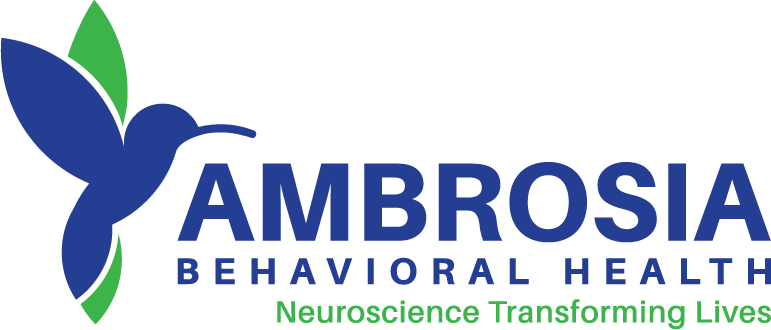Although addiction is discussed in less than 1% of all media coverage, a nationwide study conducted by Ambrosia Treatment Center shows that amounts to 3,171 news stories per day. The 14% increase in addiction-related coverage in the last 12 months demonstrates a growing awareness of the issue.
- Addiction only made up 0.6% of all news coverage
- Addiction-related media coverage is up 14%
- Local media made up the majority of coverage (81%)
- New Hampshire, Alaska and Maine dedicated the highest percentage news coverage to addiction
- The most contributions from one journalist was 1487 articles
- 72% of articles with sentiment were negative
Where Addiction News Coverage Comes From
Local media sources made up the overwhelming majority of addiction coverage (81%). The percentage of news coverage each state dedicated to addiction varied widely.
HighestPercentageLowestPercentage
| 1. New Hampshire | 2.24 | 41. South Dakota | 0.60 |
| 2. Alaska | 1.61 | 42. Nebraska | 0.59 |
| 3. Maine | 1.35 | 43. Mississippi | 0.58 |
| 4. Massachusetts | 1.27 | 44. Rhode Island | 0.58 |
| 5. Connecticut | 1.10 | 45. Florida | 0.58 |
| 6. Vermont | 1.09 | 46. Utah | 0.58 |
| 7. North Dakota | 0.94 | 47. Louisiana | 0.58 |
| 8. Maryland | 0.94 | 48. Texas | 0.57 |
| 9. New Jersey | 0.91 | 49.Hawaii | 0.56 |
| 10. Pennsylvania | 0.89 | 50. Arkansas | 0.54 |
States that the CDC indicates have the highest number of overdose deaths – California (#30), Ohio (#14) and Pennsylvania (#11) – were noticeably missing from the top 10. So were states with the highest number of addiction treatment providers listed with SAMHSA – California (#30), New York (#32), Illinois (#22) and Florida (#45).
Instead, the top 10 was dominated by states that are only more recently struggling with addiction. While 30 states saw an increase in overdose deaths last year according to the CDC, New Hampshire (#1) saw the greatest increase at 191%. Maine (#3), Massachusetts (#4), Connecticut (#5) and North Dakota (#7) were the only other states where drug-related death rates also jumped by over 100%. Seemingly an outlier, Alaska (#2) consistently leads the country in population-adjusted alcohol poisoning deaths reported by the CDC (by far).
Though ranked last for percent of addiction-related media coverage, Arkansas (#50) is middle-of-the-pack on CDC overdose statistics. However, the state is ranked #48 for overall health by the United Health Foundation, including ranking worst for obesity and bottom three for heart disease. While addiction is impacting the state, the media (especially healthcare and political reporters) have other serious issues demanding attention. On the other hand, the low ranking for Hawaii (#49) and Texas (#48) matches the state’s low population-adjusted overdose statistics from the CDC. Because Texas had so much more total news, the state still put out more addiction-related stories in the last 12 months than any other (74,035). Texas was followed by other high population states in sheer volume of articles – California (69,143), Ohio (45,679) and New York (43,071). (Percentage of a state’s total media was used as a better way to gauge the media’s interest in the topic despite varying populations and news outlets).
What Addiction News Covers
Nearly half of all alcohol or drug addiction news took a neutral stance with no positive or negative focus or subconscious tone. Over half referenced statistical reports or data (58%).
However, of the 51% of news stories with a clear sentiment, 72% were negative. Nearly a third talked about death from addiction, an increase of 84% from last year. Over a quarter gave attention to the criminal consequences, including documenting drug-related arrests. While only 12% contain the word “hope.”
Unsurprisingly, half of all addiction stories were related to politicians, policy and healthcare. Trump administration healthcare news coverage frequently mentioned addiction, as changes will limit care for mental health. Especially at the state level, the government is being relied on for answers to treatment and prevention efforts.
The last major non-mutually-exclusive category was celebrity and athlete news, which made up just under a quarter of addiction coverage.

Who Covers Addiction
There were 997 journalists that contributed at least two addiction stories in June 2017, up 18% from last June.
The top 10 contributing journalists make up 0.8% of the total addiction coverage. The leader, Ricardo Alonso-Zaldivar, averages more than 4 articles per day.
Not surprisingly, the Associated Press took seven of the top ten spot. The most common beat for journalists was political, although three people on the list report exclusively on celebrity or sports.
| Journalist | Company | Stories |
| 1.Ricardo Alonso-Zaldivar | Associated Press | 1487 |
| 2. Liz Essley Whyte | The Center for Public Integrity | 1007 |
| 3. Russ Bynum | Associated Press | 934 |
| 4. Kim Chandler | Associated Press | 933 |
| 5. Maria Puente | USA Today | 894 |
| 6. Paul Elias | Associated Press | 886 |
| 7. Alan Fram | Associated Press | 877 |
| 8. Jayne O’Donnell | USA Today | 845 |
| 9. John Raby | Associated Press | 838 |
| 10. Anthony Mccartney | Associated Press | 785 |
Key Takeaways
Any article that touches on addiction is raising awareness. If we, as a society, are not aware of an issue, how can we ever expect to successfully address it? A lack of media coverage delays solutions and addiction is a life-or-death issue.
Local is just as important as national coverage. Addiction is everywhere. No community is too wealthy, too tight-knit or too suburban to avoid this disease. Stories of fellow residents prove addiction is something their community needs to be discussing and helping with, instead of pretending addiction is somewhere else.
Media coverage can help end the stigma. Research tells us that addiction is a disease with genetic, biological and environmental causes. If media takes a judgmental criminal or moral tone, so will the public and less people will reach out for help.
Awareness is just the beginning of solving an issue. While the media is generally doing their part to step up news coverage, 21.7 million Americans still need help right now.
For the Press
Methodology: The report looked at coverage in the U.S. from July 1, 2016 to June 30, 2017 using a leading PR software to gather 187.3 million English media stories. Simple statistical methods were used. The articles were analyzed for media sentiment using an advanced language processing algorithm.
Ambrosia Treatment Center
With three drug rehabilitation centers in Florida and one in California, Ambrosia Treatment Center has helped over 10,000 people recover from alcohol and other drugs. By combining the latest advancements in addiction medicine with concierge clinical care, lives are healed and families are restored. To learn more, visit AmbrosiaTC.com.




